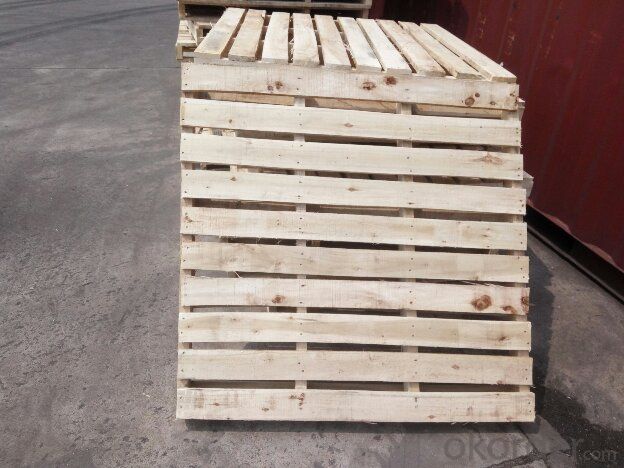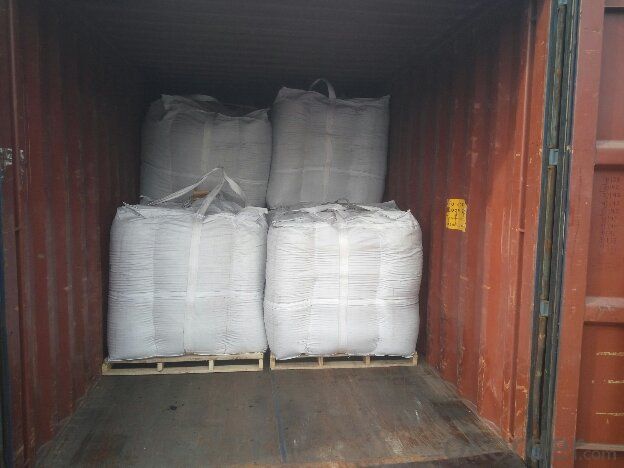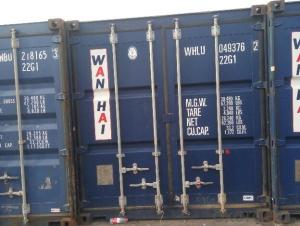0.5% Mositure and 85%FC coke for foundry
- Loading Port:
- Shanghai
- Payment Terms:
- TT OR LC
- Min Order Qty:
- 20.3
- Supply Capability:
- 1003 m.t./month
OKorder Service Pledge
OKorder Financial Service
You Might Also Like
Brief Introduction
Foundry Coke is the main fuel of melting iron in the oven. It can melt the materials in the over, make the iron reach great heat, and keep good air permeability by sustain stock column. Thus, the foundry coke should have the characteristics of big block, low reactivity, small porocity, enough anti-crush strengh, low ash and low sulphur.
The coke handled by our cooperation is made from superior coking coal of Shanxi province. Provided with the advantages of low ash, low sulphur and high carbon. Our coke is well sold in European, American, Japanese and South-east Asian markets. Our owned Coke plant are located in Shanxi Province and supplying of you many kinds of coke.
we supply Foundry Coke long-term, its characteristic is best strength, low sulfur and phosphorus,thermal stability.it is more and more wildely-used
Specifications:
ASH % | 8% max | 10% max | 12% max |
V.M.% MAX | 1.5% max | 1.5% max | 2% max |
SULFUR % | 0.65% max | 0.65% max | 0.7% max |
MOISTURE | 5% max | 5% max | 5% max |
Size | 80mm-120mm,80-150,100-150mm, or as request | ||
Features
1. Our quality is always quite good and stable which is producing and packing according to customers' requirements.
2. Putting Client profile into first, achieved mutual benefit.
3. Good partner on business. It's a good and wise choice for customers' to purchase from us. It's our great honor to cooperate with you.
4. We can supply documents as follows:
- bill of loading,
-Invoice,
-Packing List
-Insurance
-standard inspection pictures of the container as specified by INSPECTORATE
-or more requested by buyer.
Pictures


FAQ
1. What is the packing?
In 25kg bag/ In jumbo bags without pallet/ Two jumbo bags with one pallet/ or as customers’ request
2. What is the production capacity?
10 thousand tons per month
3 What is payment term?
Irrevocable LC at sight/ 20% down payment by T/T and 80% against BL copy byT/T/ or to be discussed
4 What is the service?
We will send sample to the third party(CIQ, CCIC, SGS,BV or to be discussed) for checking, and present the test certificate and loading repot of shipment.
- Q:What is the atomic weight of carbon?
- The atomic weight of carbon is approximately 12 atomic mass units.
- Q:What is the carbon cycle?
- The carbon cycle refers to the process by which carbon is exchanged and recycled between the Earth's atmosphere, oceans, and land. It involves various natural processes such as photosynthesis, respiration, decomposition, and combustion, as well as human activities such as burning fossil fuels and deforestation. This cycle helps regulate the Earth's climate and is crucial for maintaining the balance of carbon dioxide in the atmosphere.
- Q:What is carbon fixation in biology?
- Carbon fixation is the process by which carbon dioxide from the atmosphere is converted into organic compounds by plants, algae, and some bacteria. This process is crucial for the production of organic matter and the maintenance of a stable carbon cycle on Earth.
- Q:How does carbon impact the energy balance of the Earth?
- Carbon impacts the energy balance of the Earth primarily through its role in the greenhouse effect. Carbon dioxide (CO2), a greenhouse gas, is released into the atmosphere through natural processes and human activities such as burning fossil fuels and deforestation. The greenhouse effect is a natural process where certain gases in the atmosphere trap heat from the sun, preventing it from escaping back into space. This process helps maintain a suitable temperature for life on Earth. However, excessive carbon emissions have enhanced the greenhouse effect, leading to global warming and climate change. When carbon dioxide and other greenhouse gases accumulate in the atmosphere, they trap more heat, causing the Earth's surface temperature to rise. This rise in temperature disrupts the energy balance of the planet. It contributes to the melting of polar ice caps, rising sea levels, and more frequent and severe extreme weather events. Furthermore, carbon affects the energy balance of the Earth by altering the carbon cycle. The carbon cycle is a natural process in which carbon is exchanged between the atmosphere, oceans, and land. However, human activities have significantly disrupted this cycle by releasing large amounts of carbon into the atmosphere, primarily through the burning of fossil fuels. Excessive carbon emissions result in an imbalance in the carbon cycle, as the natural processes that absorb and store carbon, such as photosynthesis and the ocean's ability to absorb CO2, cannot keep up with the pace of emissions. This leads to an accumulation of carbon dioxide in the atmosphere, further exacerbating the greenhouse effect and contributing to global warming. Overall, carbon significantly impacts the energy balance of the Earth by intensifying the greenhouse effect and disrupting the natural carbon cycle. It is crucial to reduce carbon emissions and transition to cleaner and more sustainable energy sources to mitigate the negative effects of carbon on the planet's energy balance and ultimately, preserve the health and stability of our environment.
- Q:What are the effects of carbon emissions on human respiratory health?
- Carbon emissions can have significant negative effects on human respiratory health. One of the primary components of carbon emissions is carbon dioxide (CO2), which contributes to air pollution and climate change. High levels of carbon dioxide in the atmosphere can lead to an increase in the concentration of other pollutants such as particulate matter, nitrogen oxides, and sulfur dioxide. Exposure to these pollutants, particularly fine particulate matter (PM2.5), has been linked to a range of respiratory problems. Inhalation of PM2.5 can irritate the airways, leading to symptoms such as coughing, wheezing, and shortness of breath. It can also exacerbate existing respiratory conditions such as asthma, chronic obstructive pulmonary disease (COPD), and bronchitis. Long-term exposure to high levels of PM2.5 has been associated with the development of respiratory diseases and can contribute to increased hospital admissions and mortality rates. Furthermore, carbon emissions contribute to the formation of ground-level ozone, a harmful pollutant that is a key component of smog. Ozone can cause inflammation and damage to the respiratory system, leading to respiratory symptoms and reduced lung function. It can also worsen existing respiratory conditions and increase the risk of respiratory infections. In addition to these direct effects, carbon emissions also contribute to climate change, which has indirect impacts on respiratory health. Climate change can lead to increased heatwaves and extreme weather events, which can worsen air quality and trigger respiratory symptoms. It can also impact the distribution of allergens such as pollen, mold spores, and dust mites, increasing the prevalence of respiratory allergies and asthma. Overall, carbon emissions have significant detrimental effects on human respiratory health. They contribute to air pollution, which can cause respiratory symptoms, exacerbate existing respiratory conditions, and increase the risk of developing respiratory diseases. They also contribute to climate change, which indirectly impacts respiratory health through changes in air quality and the prevalence of allergens. Reducing carbon emissions and improving air quality is crucial for protecting and promoting respiratory health.
- Q:What are the effects of carbon emissions on the Arctic ecosystem?
- Carbon emissions have significant effects on the Arctic ecosystem, primarily due to the phenomenon of global warming. As carbon dioxide and other greenhouse gases are released into the atmosphere, they trap heat, leading to increased temperatures worldwide. However, the Arctic is particularly vulnerable to these effects due to its unique characteristics. One of the most significant impacts of carbon emissions on the Arctic ecosystem is the rapid melting of ice. Rising temperatures cause glaciers and ice sheets to shrink, leading to the loss of habitat for ice-dependent species such as polar bears, walruses, and seals. These animals not only rely on the ice for resting and breeding but also for hunting and finding food. With the reduction of their natural habitat, their populations are declining, impacting the delicate balance of the Arctic food chain. Additionally, the melting of ice results in rising sea levels, which can have cascading effects on coastal areas. Many Arctic communities, including indigenous peoples, are located near the coast and depend on the sea for their livelihoods. Increased erosion, flooding, and storm surges due to rising sea levels threaten their homes, infrastructure, and traditional ways of life. Furthermore, carbon emissions contribute to ocean acidification, a process in which the absorption of excess carbon dioxide by seawater leads to a decrease in its pH level. This acidification has detrimental effects on marine organisms such as shellfish, corals, and plankton, which struggle to build and maintain their calcium carbonate structures. These organisms are essential food sources for various Arctic species, including fish, seabirds, and marine mammals. The decline in their populations disrupts the intricate web of life in the Arctic and can have far-reaching consequences. Climate change caused by carbon emissions also disrupts the timing and patterns of seasonal events, such as the timing of plant growth, the migration of birds, and the availability of food resources. This mismatch can have severe consequences for species that rely on specific timing for reproduction, migration, and survival. Overall, the effects of carbon emissions on the Arctic ecosystem are profound and wide-ranging. The loss of sea ice, rising sea levels, ocean acidification, and disrupted ecological processes all contribute to the vulnerability of Arctic species and communities. Urgent action to reduce carbon emissions, mitigate climate change, and protect this fragile ecosystem is crucial for the long-term preservation of the Arctic.
- Q:What are the challenges of carbon capture and storage technology?
- One of the main challenges of carbon capture and storage technology is the high cost involved in implementing and maintaining the infrastructure. The capturing and storing of carbon dioxide emissions requires significant investment in equipment and facilities, making it financially burdensome for many industries. Additionally, the process of capturing carbon dioxide from flue gases can consume a considerable amount of energy, resulting in increased operational costs. Another challenge is the limited capacity for storing captured carbon dioxide. Finding suitable geological formations or reservoirs to safely store large quantities of carbon dioxide is a complex and time-consuming task. It requires thorough geological assessments and monitoring to ensure that the stored carbon dioxide will not leak back into the atmosphere or pose any environmental risks. Moreover, the transportation of captured carbon dioxide to storage sites can also be a logistical challenge. Developing a robust and efficient transportation infrastructure to move carbon dioxide from various emission sources to storage locations is crucial but can be difficult, especially in areas with limited existing infrastructure. Furthermore, there are concerns about the long-term security and permanence of stored carbon dioxide. It is essential to ensure that the stored carbon dioxide remains trapped underground indefinitely to prevent its release into the atmosphere. This requires continuous monitoring and verification processes to guarantee the integrity of the storage sites over extended periods. Lastly, public acceptance and regulatory frameworks pose significant challenges for carbon capture and storage technology. There may be public concerns about the safety and potential environmental impacts of storing large amounts of carbon dioxide underground. Establishing clear regulations and guidelines, as well as effective communication and public engagement, are essential to address these concerns and build trust in the technology.
- Q:What are the consequences of increased carbon emissions on technological advancements?
- The consequences of increased carbon emissions on technological advancements can be both positive and negative. On one hand, the increased focus on reducing carbon emissions has spurred innovation in clean technology and renewable energy sources. This has led to advancements in technologies such as solar panels, wind turbines, and electric vehicles, which are considered more environmentally friendly alternatives to traditional energy sources. These advancements have the potential to create new industries, generate jobs, and promote sustainable development. On the other hand, increased carbon emissions can have negative consequences on technological advancements. The rising levels of carbon dioxide in the atmosphere contribute to climate change, which poses significant challenges to various sectors, including technology. Extreme weather events, such as hurricanes and wildfires, can damage infrastructure and disrupt technological systems. In addition, higher temperatures can affect the efficiency of electronic devices, leading to increased energy consumption and reduced performance. Furthermore, the need to mitigate and adapt to climate change through the development of clean technologies requires significant financial investments. This can divert resources from other areas of technological innovation and research, limiting advancements in fields such as artificial intelligence, biotechnology, or space exploration. As a result, the focus on addressing carbon emissions may reduce the overall pace of progress in certain technological areas. Overall, the consequences of increased carbon emissions on technological advancements are complex and multifaceted. While they have driven innovation in clean technologies, they have also presented challenges and trade-offs in terms of resource allocation and the impact of climate change on technological infrastructure. Efforts to reduce carbon emissions need to be balanced with ensuring continued progress in other technological fields to achieve a sustainable and technologically advanced future.
- Q:What are the consequences of increased carbon emissions on coral reefs?
- The consequences of increased carbon emissions on coral reefs are highly detrimental. Elevated carbon dioxide levels in the atmosphere lead to ocean acidification, which negatively impacts the ability of corals to build their calcium carbonate skeletons. This results in weakened and brittle coral structures, making them more susceptible to damage from storms and other environmental stressors. Additionally, higher temperatures caused by carbon emissions contribute to coral bleaching events, where corals expel the symbiotic algae that provide them with essential nutrients and vibrant colors. These combined effects of ocean acidification and warming ultimately lead to significant coral reef degradation, loss of biodiversity, and the decline of ecosystem services provided by these valuable marine habitats.
- Q:Glucose contains resveratrol (C14H12O3) to determine the mass ratio of resveratrol and carbon dioxide of the same quality as carbon dioxide
- They are x and y, containing carbon equal, according to the mass of an element = the mass of a compound * the elementMass fractionFor C14H12O3, the carbon mass fraction is C%=12*14/ (12*14+12+16*3) *100%=73.68%For CO2, the mass fraction of carbon is 12/ (12+16*2) =27.27%There is x *73.68%=y*27.27%So there's X: y =57:154
1. Manufacturer Overview |
|
|---|---|
| Location | |
| Year Established | |
| Annual Output Value | |
| Main Markets | |
| Company Certifications | |
2. Manufacturer Certificates |
|
|---|---|
| a) Certification Name | |
| Range | |
| Reference | |
| Validity Period | |
3. Manufacturer Capability |
|
|---|---|
| a)Trade Capacity | |
| Nearest Port | |
| Export Percentage | |
| No.of Employees in Trade Department | |
| Language Spoken: | |
| b)Factory Information | |
| Factory Size: | |
| No. of Production Lines | |
| Contract Manufacturing | |
| Product Price Range | |
Send your message to us
0.5% Mositure and 85%FC coke for foundry
- Loading Port:
- Shanghai
- Payment Terms:
- TT OR LC
- Min Order Qty:
- 20.3
- Supply Capability:
- 1003 m.t./month
OKorder Service Pledge
OKorder Financial Service
Similar products
New products
Hot products




























